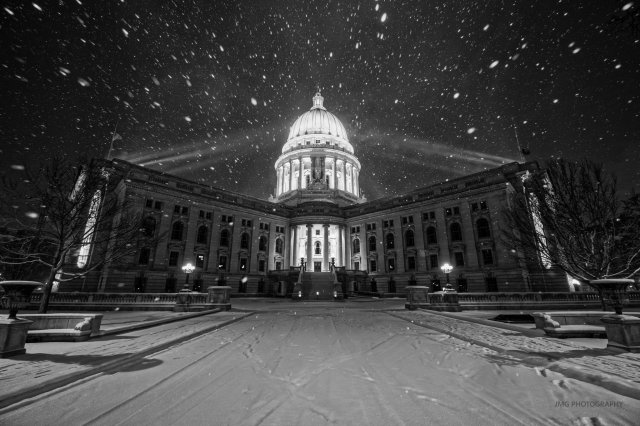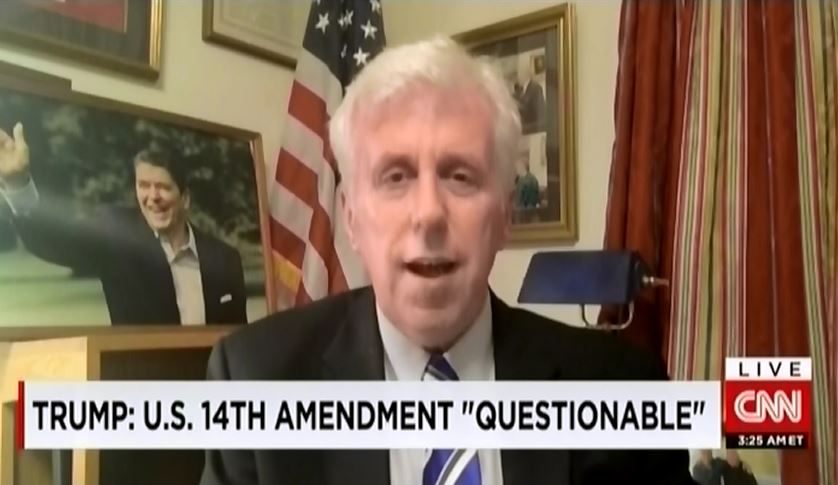There are clear, notable signs that a storm is approaching. If you’re not looking for the storm you may not notice them at all, but they’re there all the same. The air pressure will begin to change, temperature will rise or fall, and the wind begins to change. Even if you’re not very scientifically inclined, the signs of an approaching storm are evident.
On Tuesday, January 16, special elections will be held to fill Wisconsin State Senate seat for District 10. The outgoing state senator, Sheila Harsdorf (R), has resigned her seat to join Governor Scott Walker’s cabinet as Secretary of the Wisconsin Department of Agriculture, Trade, and Consumer Protection (DATCP). While this may seem like a local affair confined to the Wisconsin 10th Senate District, the results of tomorrow’s election will contribute to the results from elections in 2017, a body of work that helps us understand how Americans are reacting to the largest Republican control of federal, state, and local government and policy enactment since the 1920s. The results Tuesday night will be the first reading of political conditions in the Wisconsin State Legislature since the 2016 elections, and will likely be a sign of the approach 2018 Midterm Elections.
Tuesday will be Wisconsin’s first official barometer reading to anticipate Wisconsin’s response Scott Walker’s campaign for a third term as governor and to the Republican’s first term running Washington, D.C.
2017 Elections Review: Scheduled and Special
Throughout 2017 we have watched polls and federal, state, and local elections to determine how the American public is reacting to the Republicans’ control of the White House and Congress. So far, Democrats have faired well, taking back the New Jersey Governor’s Mansion, retaining the Virginia Governor’s Mansion, and retaking 15 seats in the Virginia House of Delegates, reducing the Republican majority to 51-49. Most notably, Democrat Doug Jones beat the embattled Republican Roy Moore in the Alabama U.S. Senate special election, a huge Democratic victory in a ruby-red, Bible Belt state.
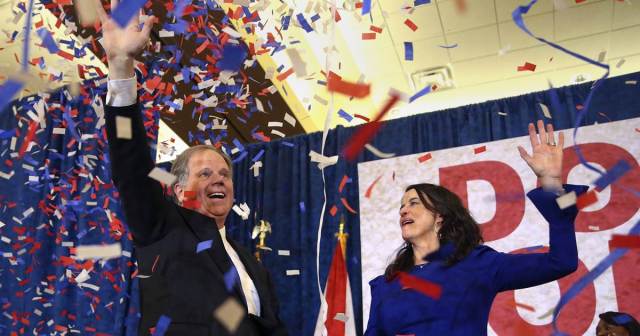
Notable still are the elections that haven’t flipped a seat from Republican to Democrat, but have shown signs of shifting political winds. Nationally, races for the U.S. House resulted in Republican victories by narrowing margins. A U.S. House special election in Kansas resulted in a 6-point victory where the outgoing representative won by 31 points in 2016. Elections to fill the at-large Montana U.S. House seat for Secretary of the Interior Ryan Zinke resulted in a 5-point margin of victory for Republican Greg Gianforte, who notoriously punched a reporter the night before the election. In 2016, Zinke won by 16 points while Trump won Montana by 20 points.
At the state and local level a number of races have resulted in Republican margins of victory cut by 10-30 points. In the Iowa State Senate District 3 special election, Republicans maintained control of the seat by a 10-point margin in a senate district that Trump won by 41 points: a 31-point swing in deep-red northwest Iowa.
Notably, the winner of this special election is a state representative from within the district, creating an additional Iowa State House special election slated for Tuesday, January 16, in the vacated Iowa State House District 6. It’s also worth noting that while Trump carried House District 6 by 31 points, Democrats carried the district by a slight margin in the Iowa State Senate District 3 special election. The Iowa GOP has responded by pouring over $115,000 into the race.
While each election is different, in need of individual review within the scope of local interests and issues, a trend has developed nonetheless. Federal, state, and local districts controlled by Republicans, ranging from tossup to ruby-red offices, are showing signs of change. The sky is darkening and a strong, cold wind blows from the north.
Wisconsin State Senate District 10 Special Election
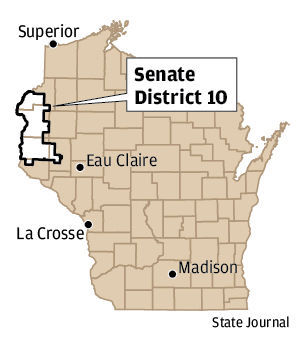
Which brings us back to northwest Wisconsin. Wisconsin State Senate District 10 runs from the City of Menomonie along Interstate-94 to River Falls. It stretches north, running 90 miles along the Minnesota border. The district is a unique blend of rural, agricultural land along with sprawling suburbs of the Twin Cities just across the border. The district has continued to grown more conservative over previous years, with 2016 resulting in Harsdorf winning the senate seat by 26 points and Trump winning in the district by 17 points.
Winnowed down from a field of six, there are three candidates who will compete in Tuesday’s special election.

Republican State Representative Adam Jarchow represents Wisconsin State Assembly District 28, which covers the northern third of the senate district. While in the Wisconsin State Assembly he is known for aggressively advocating for private property rights as opposed to public land, environmental regulation, and local zoning. Jarchow was one of a handful of Republicans to vote against the state budget, placing him on the far right of the Wisconsin Republican Party.
Jarchow has focused his campaign around a rosy picture of economic development on the heels of property tax cuts and regulatory reforms pushed by Republicans since taking over the Wisconsin State Legislature and governor’s mansion in 2010. During a public forum in New Richmond, Jarchow noted, “Every single employer out there is looking to hire. We’re in an environment where wages are growing, where businesses are growing, where businesses are moving across the river [from Minnesota] to take advantage of some of the wonderful changes we’ve had in Wisconsin.”

Democrat Patty Schachtner is the St. Croix County medical examiner. The Somerset native has experience serving in various roles in local government to bolster her credentials. Schachtner’s campaign has painted her as a pro-Second Amendment Democrat who is a bear-hunting public servant. At the same public forum in New Richmond, Schachtner criticized lawmakers, particularly the Wisconsin GOP, for focusing on wealthy business owners rather than blue-collar workers.
Schachtner believes the Assembly and Senate need to focus more legislative action and funds focusing on local economies and education. With the vast majority of private sector job growth happening in five of Wisconsin’s 72 counties, this is a message that resonates with working class folks outside of Madison. Schachtner noted during the forum that, “Forty-one percent of the people in New Richmond live in an income-restricted environment, which means they’re struggling. They’re working but they’re struggling. Those are the people I’m working for.”
The third candidate contending for Senate District 10 is Libertarian Brian Corriea, who has labeled his campaign as a free pass for voters who are fed up with both major parties. Corriea embodies most of the values that you’d anticipate from a Libertarian from the rural Midwest, supporting further tightening state budgets, opening up public land, cutting environmental regulations, and overall reducing the role of government.
Campaign Fundraising
As the special election campaign entered its last week, campaign finance numbers for the major party candidates demonstrated how seriously both parties are taking this election. As of the end of December 2017, Republican Adam Jarchow has raised nearly $271,000, of which he has spent more than $225,000. Democrat Patty Schachtner is not far behind, raising over $196,000, of which she’s spent $133,000. Libertarian Corriea has not been required to file any campaign finance information as he’s raised less than $2,000.
These numbers are incredible for any state senate special election, let along a Wisconsin State Senate special election that contains Twin Cities suburbs and rural, northern Wisconsin agriculture country. The campaign finance situation is even more interesting in District 10 as its largely covered by the Twin Cities media market, making television advertising cost-prohibitive for Wisconsin candidates. Campaign strategists in both parties note that the key to reaching voters is by direct mail, social media, and door-to-door canvassing.
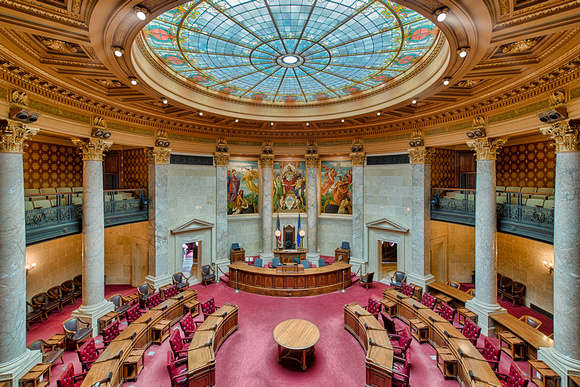
Wisconsin Democrats Response to 2016
The results of the special election in Wisconsin State Senate District 10 won’t flip control of the Wisconsin Senate, currently run by Republicans 18-13 in the 33-seat chamber. However, it will demonstrate how well a Democratic candidate performs outside of Madison and Milwaukee.
If Wisconsin Democrats want to hold committee gavels and sit in the Senate Majority Leaders office again, they have to start winning back rural, working-class voters. If Democrat Patty Schachtner is able to close the gap or even win this special election, the political weather reading support the Democratic Party’s chances of winning Wisconsin State Senate District 10, propelling them towards the 2018 elections for rural State Senate and Assembly seats as well as the Governor’s Mansion in Madison. Tuesday’s special election will be Wisconsin’s first barometer reading, we’ll soon see if conditions predict that a storm may be moving through Wisconsin in 2018.
